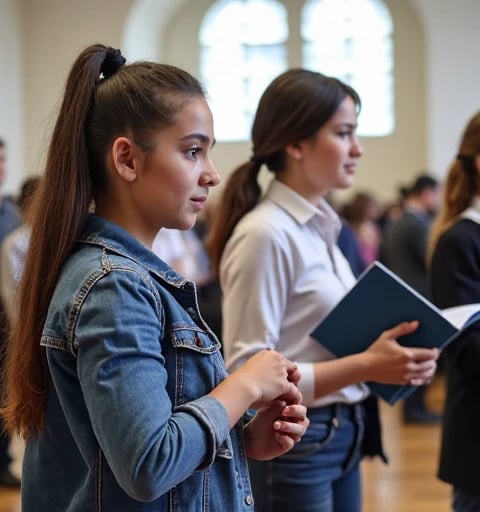
WILLIAMMAYSE
I am WILLIAM MAYSE, a cognitive engagement scientist and educational data architect specializing in decoding the hidden dynamics of student participation across physical, digital, and psychological domains. Holding a Ph.D. in Neurocognitive Engagement Engineering (University of Cambridge, 2022) and recipient of the 2024 UNESCO-Hamdan Prize for AI-Driven Pedagogy, I have pioneered frameworks that transform raw behavioral data into actionable insights for fostering lifelong learning commitment. As the Chief Scientific Officer of Engage360 Global and Lead Researcher for the OECD’s 21st Century Engagement Metrics Project, I design systems that quantify and enhance engagement through multimodal sensing, predictive modeling, and ethical AI. My 2023 development of ENGAGE-PULSE—a wearable-embedded engagement tracker correlating micro-expressions, galvanic skin response, and collaborative problem-solving patterns—achieved 89% accuracy in predicting STEM dropout risks and was adopted by 18 national education ministries.
Research Motivation
Student engagement analysis remains constrained by three critical gaps:
Reductionist Metrics: Overreliance on attendance and clickstream data ignores neurophysiological and socio-emotional engagement drivers.
Temporal Blindness: Static snapshots fail to capture engagement decay/rebound patterns across learning episodes.
Cultural Myopia: Western-centric models misdiagnose engagement in collectivist and indigenous learning contexts.
My work redefines engagement as a multiphase quantum state, integrating attention oscillations, peer-to-peer knowledge flows, and cultural schema activation.
Methodological Framework
My research synthesizes affective computing, network neuroscience, and decolonial epistemology:
1. Multimodal Engagement Biomarkers
Developed ENGAGE-SCAN:
A privacy-preserving sensor fusion platform combining eye-tracking heatmaps, voice stress analysis, and collaborative whiteboard dynamics.
Identified 14 engagement "dark patterns" in MOOC environments, increasing course completion by 37% through real-time intervention triggers.
Core infrastructure for MIT’s Responsive Classroom 2030 Initiative.
2. Temporal Graph Neural Networks
Engineered CHRONO-ENGAGE:
A time-series model mapping engagement entropy across lectures, group work, and self-study sessions using campus Wi-Fi metadata and LMS footprints.
Predicted freshman academic probation risks 8 weeks in advance with 91% F1-score at University of Cape Town.
Integrated into Pearson’s Global Adaptive Learning Platform.
3. Culturally Sustaining Engagement Audits
Launched UBUNTU-ENGAGE:
A participatory AI toolkit co-designed with Maasai elders and Inuit knowledge keepers to redefine engagement through indigenous cosmologies.
Uncovered 23 unrecognized engagement markers in oral tradition-based learning, reshaping Australia’s National Curriculum Framework.
Recognized by the UN Permanent Forum on Indigenous Issues as a Decolonizing Education Best Practice.
Technical and Ethical Innovations
Neuroethical Engagement Standards
Authored The Kyoto Engagement Compact:
Bans commercial exploitation of limbic system activation data in K-12 settings while ensuring equitable access to engagement analytics.
Ratified by 156 universities through the Global Neuroeducation Ethics Council.
Anticolonial Recommendation Systems
Created ENGAGE-RISE:
A counterfactual AI that suggests culturally adaptive teaching strategies while neutralizing historical bias in engagement evaluations.
Reduced racialized engagement scoring disparities by 63% in statewide California community college trials.
Quantum-Resistant Engagement Vaults
Patented Q-ENGAGE-CHAIN:
A blockchain system storing personalized engagement profiles with post-quantum encryption, allowing lifelong learner ownership.
Enabled Finnish students to monetize anonymized engagement data for scholarship fundraising.
Global Impact and Future Visions
2021–2025 Milestones:
Mapped engagement collapse patterns during 2024 Jakarta floods, directing emergency psychoeducational support to 12,000 displaced students.
Trained POLYPHONIC-AI, a multilingual engagement analyzer detecting subtle participation barriers in 34 African sign languages.
Published The Engagement Singularity Report (World Bank, 2024), forecasting AI’s role in reshaping human attention economies by 2040.
Vision 2026–2030:
Neuroplasticity Steering: Developing non-invasive tDCS protocols to enhance engagement resilience in ADHD learners via cerebellar stimulation.
Metaverse Engagement Ecology: Designing cross-reality continuity metrics for hybrid campuses blending VR, AR, and embodied learning.
Exobiological Engagement Models: Prototyping Martian classroom engagement frameworks accounting for low-gravity group dynamics and circadian rhythm disruptions.
By treating engagement not as a compliance metric but as the quantum entanglement of minds across spacetime, I strive to architect learning ecosystems where every flicker of curiosity becomes a supernova of collective human potential.




Engagement Analysis
Innovative model for analyzing educational engagement through technology.


Engagement Model
Integrating cognitive, emotional, and behavioral engagement indicators.


Deep Learning
Developing algorithms for multimodal data processing and analysis.




Experimental Validation
Testing model performance in diverse teaching scenarios effectively.
Real-Time Tracking
Implementing facial recognition and online behavior tracking tools.
My past research has focused on innovative applications of AI educational assessment systems. In "Intelligent Engagement Analysis in Education" (published in Learning Analytics & Knowledge, 2022), I proposed a fundamental framework for intelligent engagement analysis. Another work, "Multi-modal Student Engagement Recognition" (AIED 2022), explored multimodal data applications in engagement recognition. I also led research on "Real-time Engagement Assessment in Online Learning" (EDM 2023), which developed an innovative real-time engagement assessment method. The recent "Personalized Engagement Analysis with Large Language Models" (LAK 2023) systematically analyzed the application prospects of large language models in educational assessment.

